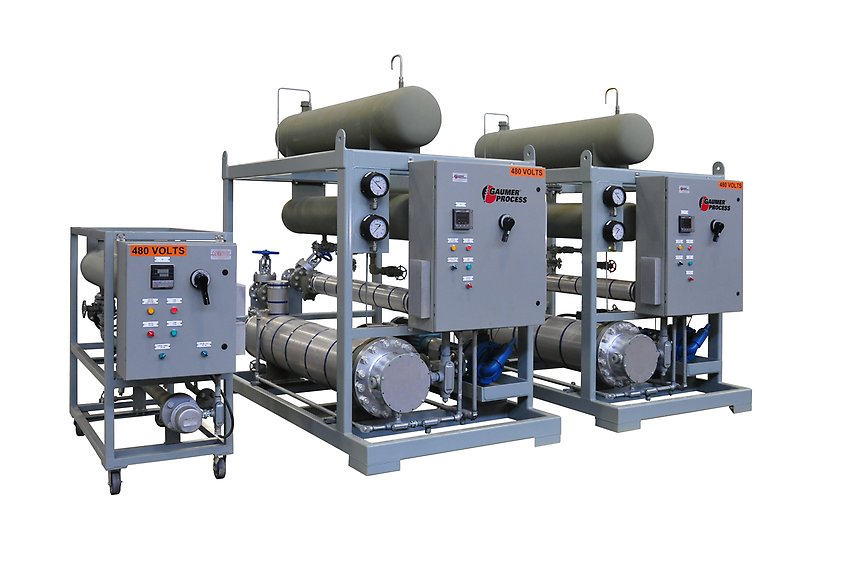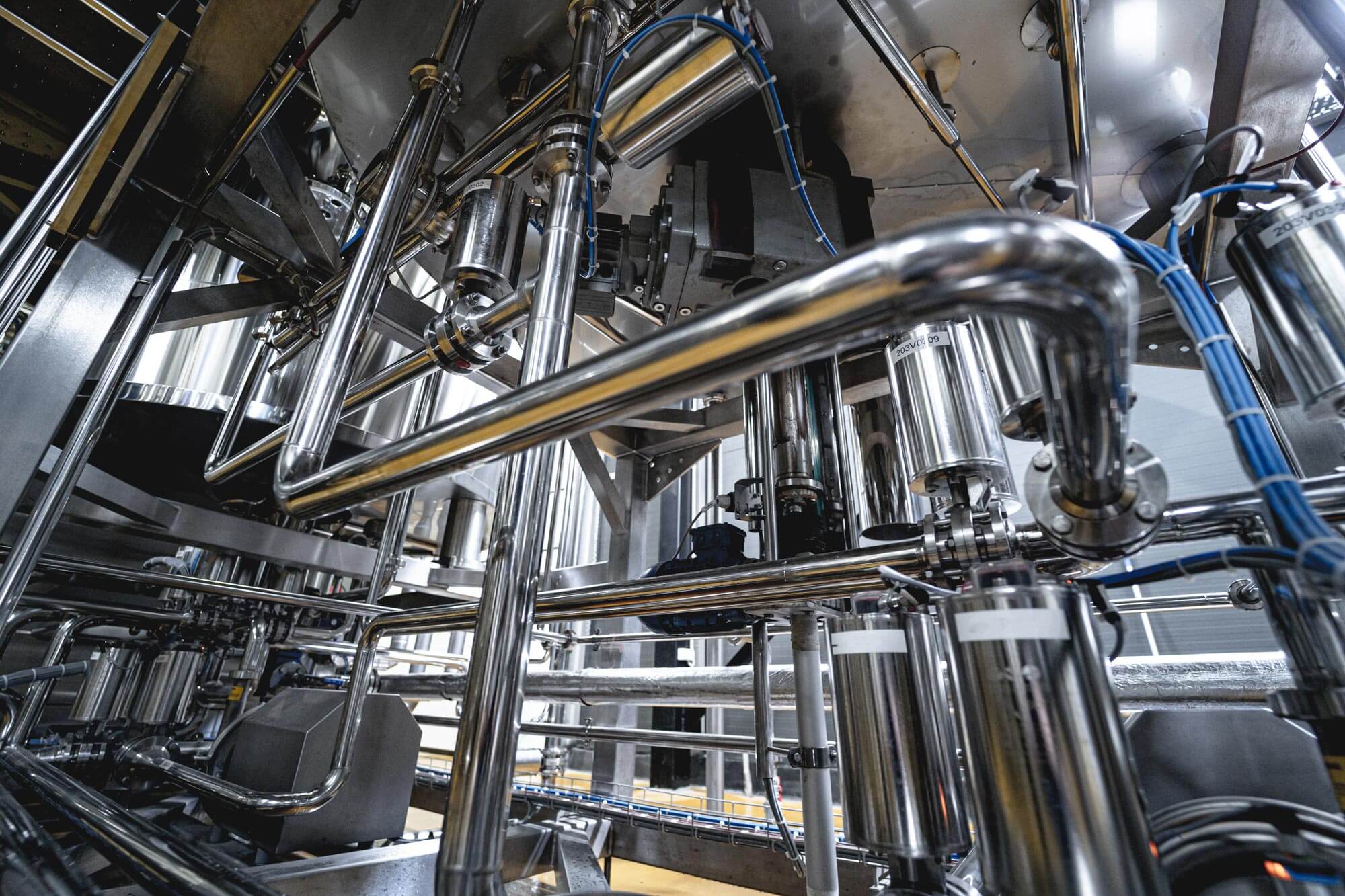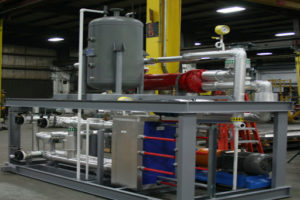A Comprehensive Guide to Selecting the Right Heat Transfer Equipments for Your Requirements
Selecting the suitable Heat transfer system is essential for operational effectiveness. Various systems satisfy different needs, influenced by variables such as temperature array and fluid type. Recognizing the principles behind Heat transfer, such as transmission, radiation, and convection, is crucial. In addition, reviewing energy resources and upkeep practices can affect long-lasting performance. A closer assessment of these factors to consider discloses how to tailor a system to details demands. What should one prioritize in this complex decision-making procedure?
Understanding Heat Transfer: Secret Principles and Principles
Although Heat transfer might look like an uncomplicated concept, it includes a series of concepts that are basic for effective system design. Comprehending these principles is vital for developers and engineers that aim to optimize thermal performance in different applications. Transmission, for circumstances, includes the transfer of Heat through strong materials, while convection describes the motion of Heat within fluids. Radiation, another essential principle, describes just how Heat can be moved via electro-magnetic waves. Each of these devices plays a crucial role in figuring out exactly how power moves within a system. By extensively understanding these concepts, professionals can make informed choices, making certain that Heat transfer systems operate effectively and satisfy the particular demands of their applications
Sorts Of Heat Transfer Equipments: An Overview
Understanding the concepts of Heat transfer lays the foundation for checking out the various sorts of Heat transfer systems offered. Heat transfer systems can be categorized mostly into three types: radiation, conduction, and convection. Conduction includes Heat transfer via strong products, depending on straight contact in between fragments. Convection, on the various other hand, happens in fluids (fluids and gases) where the motion of the fluid itself helps with Heat transfer. Radiation entails the transfer of Heat with electro-magnetic waves and does not call for a tool, permitting it to happen in a vacuum cleaner. Each sort of system has distinctive attributes and applications, making it important for individuals and companies to thoroughly assess their details demands when selecting the most suitable Heat transfer option.
Applications of Heat Transfer Solutions in Numerous Industries
Heat transfer systems play a crucial role throughout various industries, influencing effectiveness and product quality. In industrial manufacturing procedures, they assist in accurate temperature level control, while in food and drink processing, they ensure safety and preservation. In addition, cooling and heating and climate control systems count heavily on efficient Heat transfer to keep comfortable settings.
Industrial Production Processes

Numerous commercial manufacturing procedures rely heavily on effective Heat transfer systems to maximize efficiency and boost product quality. In fields such as metalworking, Heat exchangers play a vital function in preserving perfect temperature levels throughout welding, spreading, and building. These systems guarantee consistent Heat distribution, which is important for achieving wanted material homes. In the chemical manufacturing market, Heat transfer systems facilitate precise temperature level control during responses, influencing return and security. Moreover, in fabric manufacturing, effective Heat monitoring is very important for dyeing and finishing procedures, affecting shade consistency and textile top quality. By selecting appropriate Heat transfer innovations, producers can enhance energy efficiency and decrease functional expenses, eventually causing an extra competitive and lasting manufacturing atmosphere.
Food and Drink Handling
Effective Heat transfer systems are equally essential in the food and beverage handling industry, where keeping excellent temperature levels is important for food safety and top quality. These systems play a crucial function in processes such as food preparation, sanitation, and pasteurization, making sure that products are safe for consumption and preserve their nutritional worth. Heat exchangers, for circumstances, successfully transfer Heat between liquids, enhancing power usage while minimizing temperature level fluctuations. Additionally, refrigeration systems are essential for preserving subject to spoiling products and expanding life span. The choice of Heat transfer modern technology directly affects operational performance and item honesty, making it critical for food and beverage suppliers to choose the appropriate systems tailored to their certain processing demands. This mindful option inevitably adds to consumer fulfillment and food safety and security.

A/c and Environment Control
While several industries rely upon Heat transfer systems for effectiveness, HVAC (Heating, Air Flow, and Air Conditioning) plays an important role in preserving interior environment control across different setups. These systems use Heat transfer principles to control air, temperature level, and moisture quality, making sure convenience and safety in property, business, and industrial environments. Effectively created a/c systems improve power efficiency, decrease operational expenses, and decrease environmental effect. In industrial buildings, as an example, effective climate control adds to staff member efficiency and consumer complete satisfaction. In industrial applications, cooling and heating systems assist keep excellent problems for equipment operation and item conservation. Choosing the best Heat transfer system is crucial for meeting details environment control needs and attaining total system efficiency.
Evaluating Energy Sources for Heat Transfer Systems
In evaluating energy sources for Heat transfer systems, a contrast of renewable resource alternatives more info here and fossil fuel considerations Continued is crucial. Eco-friendly resources, such as solar and wind, deal sustainable options that can decrease environmental effect. On the other hand, fossil fuels stay common due to their recognized framework and power thickness, triggering a cautious evaluation of both options.
Renewable Resource Options

Fossil Fuel Considerations
Evaluating nonrenewable fuel source considerations is important for the efficiency and sustainability of Heat transfer systems. Nonrenewable fuel sources, such as all-natural gas, oil, and coal, are conventional power sources that give considerable Heat outcome, making them popular selections for domestic and commercial applications. Their environmental effect, including greenhouse gas exhausts and resource deficiency, raises worries. When picking a warmth transfer system, it is important to evaluate the schedule, price, and regulative variables related to these gas. Furthermore, the efficiency of nonrenewable fuel source systems should be taken into consideration, as higher effectiveness can alleviate some ecological disadvantages. Ultimately, a balanced technique considering efficiency and sustainability can direct decision-makers toward one of the most appropriate Heat transfer solution for their specific great site needs.
Variables to Take Into Consideration When Selecting a Warm Transfer System
Choosing an appropriate Heat transfer system needs careful consideration of numerous factors that can considerably affect effectiveness and performance. One important element is the operating temperature array, which determines the products and style ideal for the application. In addition, the sort of fluid used in the system-- whether gas or liquid-- influences Heat transfer efficiency and compatibility. The system's dimension and ability have to straighten with the certain requirements of the procedure to stay clear of inadequacies. Power source availability is additionally crucial, affecting operating expense and sustainability. The setup environment, consisting of room restrictions and ease of access for upkeep, plays a substantial role in system selection. Ultimately, governing compliance and safety criteria need to be considered to guarantee the system fulfills all legal needs.
Maintenance and Performance Optimization for Heat Transfer Equipments
Preserving Heat transfer systems is essential for guaranteeing optimal efficiency and durability. Regular maintenance activities, such as cleaning Heat exchangers and checking insulation, assistance prevent performance losses as a result of fouling and thermal bridging. Furthermore, keeping track of system parameters, consisting of pressure and temperature, enables early detection of abnormalities, lessening downtime and costly fixings. Implementing a preventive maintenance timetable can maximize efficiency and expand the life expectancy of parts. Updating to sophisticated control systems can improve operational efficiency by adjusting to varying tons and conditions. By focusing on maintenance and efficiency optimization, drivers can accomplish minimized power intake, reduced functional prices, and improved general system integrity, ultimately causing much better resource utilization and an extra sustainable operation.
Future Fads in Heat Transfer Technologies
As industries progressively prioritize sustainability and power efficiency, future fads in Heat transfer technologies are readied to go through substantial improvements. Innovations such as sophisticated materials, including carbon nanotubes and nanofluids, guarantee boosted thermal conductivity and performance. Additionally, the assimilation of renewable resource resources right into Heat transfer systems is getting momentum, promoting green services. Smart modern technologies, consisting of IoT sensors, are expected to reinvent tracking and control, enabling real-time information analysis for optimized efficiency. Additionally, the growth of small and modular systems will promote much easier installation and maintenance, providing to varied applications. These improvements suggest a shift in the direction of more lasting, efficient, and versatile Heat transfer solutions, aligning with global power goals and ecological requirements.
Often Asked Questions
What Are the Ecological Effects of Heat Transfer Equipments?
The ecological influences of Heat transfer systems can include greenhouse gas emissions, power consumption, and prospective thermal contamination. Furthermore, incorrect disposal of materials and inadequacies can add to source depletion and ecological community interruption.
Just how Do I Compute the Cost-Effectiveness of a Warm Transfer System?
To compute the cost-effectiveness of a heat transfer system, one need to analyze first costs, operational expenditures, upkeep requirements, and energy effectiveness, comparing these variables against the expected life expectancy and efficiency of the system.
Can Heat Transfer Solution Be Made Use Of in Residential Setups?
Heat transfer systems can certainly be used in household settings. They offer effective home heating and cooling down options, making homes more comfortable while potentially lowering power expenses. Their versatility enables different applications in property settings.
What Safety And Security Rules Relate To Heat Transfer Equipments?
Safety guidelines for Heat transfer systems commonly include standards on upkeep, operation, and installation. Conformity with regional building codes, producer specifications, and industry standards is important to assure secure and effective system efficiency in different applications.
Exactly How Do Different Materials Affect Heat Transfer Effectiveness?

Transmission, for circumstances, entails the transfer of Heat via strong products, while convection refers to the movement of Heat within liquids. Comprehending the concepts of Heat transfer lays the foundation for checking out the numerous kinds of Heat transfer systems available. Heat exchangers, for instance, efficiently move Heat between liquids, enhancing power usage while minimizing temperature level changes. In evaluating energy resources for Heat transfer systems, a comparison of sustainable energy options and fossil fuel considerations is essential. Steels, such as copper and light weight aluminum, conduct Heat properly, whereas insulators like rubber and glass reduce down Heat flow.